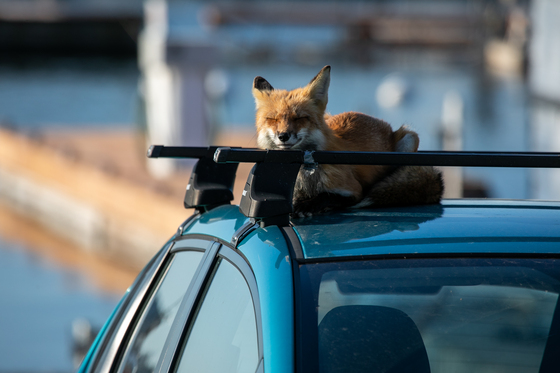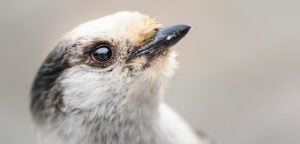Shape differences between urban and rural foxes were especially notable in the width and length of the snout. The deformation grids depict shape variation between urban and rural fox skulls. (Diagram courtesy of Kevin Parsons)
Parsons says shorter snouts can be interpreted in a couple of ways.
As urban foxes tend to eat garbage or leftover waste from people, which comprises a third of their diet, their shorter snout enables them to have a stronger bite force. This helps them crush through bones and break into packets of food that may be mixed in with the trash. In comparison, the rural foxes have longer, skinnier snouts which gives them a faster bite to help them catch moving prey.
Parsons adds that urban foxes may have smaller brains because they live in a much smaller home range size, so it doesn’t require as much spatial awareness and memory.
The smaller differences between male and female foxes was something that boggled Parsons’s mind, he says. He suggests that since urban foxes live at a higher density in the city, there might be more mating and less territory holding like you’d see in the countryside, leading to less of a difference between male and females.
What about foxes in Canada?
Foxes in Canada are not showing domestication syndrome like U.K. foxes are, and Parsons says there could be many reasons to explain why this is the case including that the foxes in Canada and the U.K. come from a different lineage and may not evolve the same way.
Population density may also play a role: Toronto has a lot of open space compared to Glasgow, meaning foxes can be timid and find hiding places more easily in a Canadian city.
The cities in the U.K. also have more of an abrupt end compared to Canada, he adds.
“In Canada, you drive an hour and it’s sprawled out with suburbs. So, getting access to the centre of the city takes much longer,” he says. “Here, I live in the suburbs but in five minutes I’m in the core of Glasgow. Then, a five minute drive the other way takes me into cow fields and countryside.”
There’s no study that looks at domestication syndrome in Canadian foxes, at least to Danielle Fraser’s knowledge.
“Something I thought would be an interesting extension to this study is looking at populations from other urban and rural pairs throughout the range of modern foxes,” says Fraser, an evolutionary biologist and research scientist at the Canadian Museum of Nature.
Pointing to how the snouts of urban foxes got shorter in the study, Fraser adds that previous studies have shown canines being more prone to evolvability in the face, particularly the snout, than other parts of their skull.








